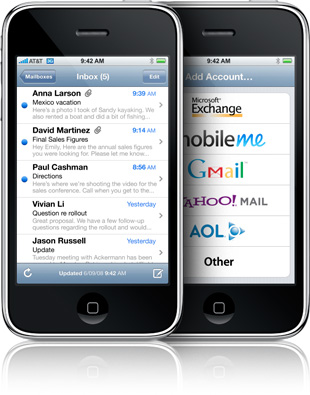Posts Tagged ‘organisation’
Consumerisation
Why has “consumerisation” suddenly popped up as the buzzword for people using their personal equipment at work over the past year or so? Apart from senior staff who have been given Blackberrys for email access, lower level staff have been accessing their email, contacts and calendars using their personal phones for years now. This has been a small minority though for three main reasons:
Firstly most people bought their phones not expecting to be able to access any email, let alone work email. These devices were for making calls and sending text messages. Email was an afterthought.
Secondly, data connectivity on a phone has been expensive, so users are not willing to spend personal money for work purposes.
Thirdly, and I think most importantly, the user experience has been poor. Reading email on small screens where only 4 or 5 words fit across the screen is a lot of effort. Composing an email on a number pad using T9 predictive text or old school multitap takes a long time and is error prone. Immediate “push” email was impractical for battery life reasons. This is why Blackberry did so well, it was a device designed specifically for email.
So what has changed to dissolve away these issues? Whether you like it or not, Apple’s iPhone turned the smartphone industry on its head. User experience, not capability, was key.
Email on the iPhone was front and centre. The Mail app was on the homescreen by default. Mail was one of the key apps that was being highlighted by Apple in their adverts along with Web browsing and things like Visual Voicemail.
Because the iPhone had such a focus on data heavy applications, the networks had to respond with data friendly tariffs. Packages with unlimited data built in became the norm (although this has since changed as the networks have adjusted to match usage patterns). This made it seem “free” for the user to surf the web and get push email. Companies used to pay for internet connectivity for their staff from home for business recovery or working from home reasons, no one does this anymore since most have unlimited broadband packages.
This all builds to create a user experience that makes it easy and attractive for the user to use their phones, and now tablets, at work. They’ve realised that working with their email, contacts and calendars on their new phones is easier and even more “fun”. This is why the numbers of users wanting to use their devices for both work and play has increased dramatically over the past few years. This is why consumerisation has become such a positive trend, and in my opinion, it is doing companies a favour. Users now want to use their own devices and data packages, therefore decreasing costs.
